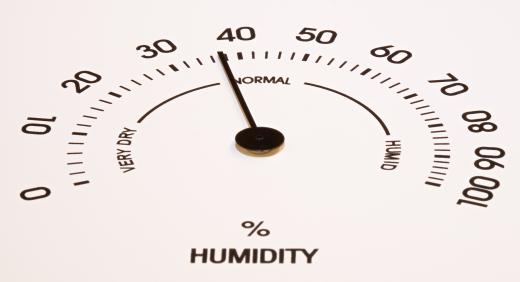What is Specific Humidity?
Specific humidity is one way of measuring the amount of moisture, or water vapor, that is suspended in the air. In this case, specific humidity refers to the direct relationship between the amount of air laden with water vapor versus dry air in a predetermined mass of air over all. It is measured by taking the amount of water vapor and dividing it by the total mass of air in a given quantity to get a ratio or percentage result, usually expressed as grams of water vapor per kilogram of air.
Specific humidity remains constant regardless of either pressure or temperature, as long as moisture is not added or reduced from a given mass. This differs from relative humidity in that it changes with fluctuations in the environment. Due to this rather stable method of measuring humidity, specific humidity is considered a very useful reading in the process of predicting weather changes in meteorology. Chemical engineering processes also calculate specific humidity to determine how it affects the outcome of chemical reactions. It is also used in mechanical engineering to test the stress level of building materials such as precast concrete.

Absolute humidity is a closely-related concept. In absolute humidity, a ratio of the mass of water in a total volume of air is compared, or grams per cubic meter, whereas with specific humidity it is a mass of water in a total mass of air, grams per kilogram. The main difference between them is that absolute humidity readings will change as the volume, and, therefore, air pressure of a quantity of air changes. The term absolute humidity can be misleading, as it is a value that fluctuates with air pressure, and therefore it is referred to in British standards as volumetric humidity.
Weather forecasts often make reference to specific humidity in the context of predicting precipitation, as water vapor has a saturation point in air depending on temperature and air pressure. If the specific humidity of air is rising due to water evaporation entering the air from the ground or other sources and the temperature is not changing, then the saturation point of the air is also being approached, which could lead to precipitation. Relative humidity, dew point, and other factors also go into meteorology calculations as well. These are all affected by temperature variations and air pressure changes based on the height of a given region above or below sea level.
AS FEATURED ON:
AS FEATURED ON:











Discuss this Article
Post your comments